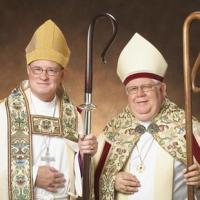
Two-Bishop Advantage
Chess authors often use the term “two-bishop advantage” in their annotations. Today I would like to elaborate on this evergreen concept in more detail.
The two-bishop advantage occurs when one side has two bishops, and the other – B+K or two knights. First of all, let’s talk about the bishop in general. As you probably know, a bishop is stronger than a knight in open positions, especially when playing on both sides of the board. This is connected with the knight’s limited mobility and the bishop’s ability to move swiftly and control the whole board (as opposed to a small section). Of course, this rule has its own exceptions, but it holds for most positions.
The main shortcoming of a bishop is that it can move only along squares of its own color, thus half the board is not available to it. On the contrary, two bishops are extremely powerful since together they can control the whole board. The two-bishop advantage is especially efficient when facing two knights. For example, check out the classical ending of a Botvinnik-Bronshtein game, 1951, Moscow.
To operate efficiently, bishops need open files. Thus one of the rules of thumb for a player who has two bishops is to open up the position. When central pawns are absent, bishops start controlling more diagonals simultaneously. Sometimes to clear up a diagonal we have to sacrifice material, e.g. a pawn or an exchange. The two-bishop advantage is often a sufficient compensation for the sacrificed material in these cases.
Here are the main techniques associated with exploiting the two-bishop advantage:
1) Attack on both sides
Knights are rather clumsy: they can participate in the fight only on one side of the board. If there is action all over the board, they have no time to come to the rescue. Therefore, it is a good idea to attack on both sides of an open board, thus obtaining an advantage in forces on one side of the board.
2) Exchanging the bishop
There was an old chess joke saying that “the best thing about having a two-bishop advantage is that you can exchange one of them.” This is indeed a useful technique of converting one type of advantage into another (i.e. giving the two-bishop advantage up for a material advantage or a more promising position).
Now, let us say we are on the wrong side of the equation: what can we do about the opponent’s mighty bishops?
1) Limit their mobility
Pawns are indispensable in this respect. Bishops detest long pawn chains which limit their mobility. Keep in mind that you can use either your own pawns, or force the opponent to arrange his pawns in an inferior way and hinder his own bishops. Another nice blocker is a knight that has a strong outpost, especially in the center.
2) Exchange one of the bishops
Sometimes it is possible to give up a knight/bishop or even a rook (positional exchange) for one of the opponent’s bishop brothers in order to defend successfully.
Let’s review a game I played at the Aeroflot Open-2011 against the reigning champion of Belorussia GM Andrey Zhigalko.
The game was full of interesting tactical shots. White had a two-bishop advantage, but it was not so easy to exploit it due to the central pawns which were limiting the bishops’ activity. By playing d4 White decided to open up the position. However, with careful defense by Black this should not have been enough for a win due to the weakness of White’s queenside pawns and Black’s ability to locate knights at powerful outposts. After Black’s mistake (Qe4) White could have obtained some advantage, but blundered in return. Nonetheless, the game ended in a draw.






